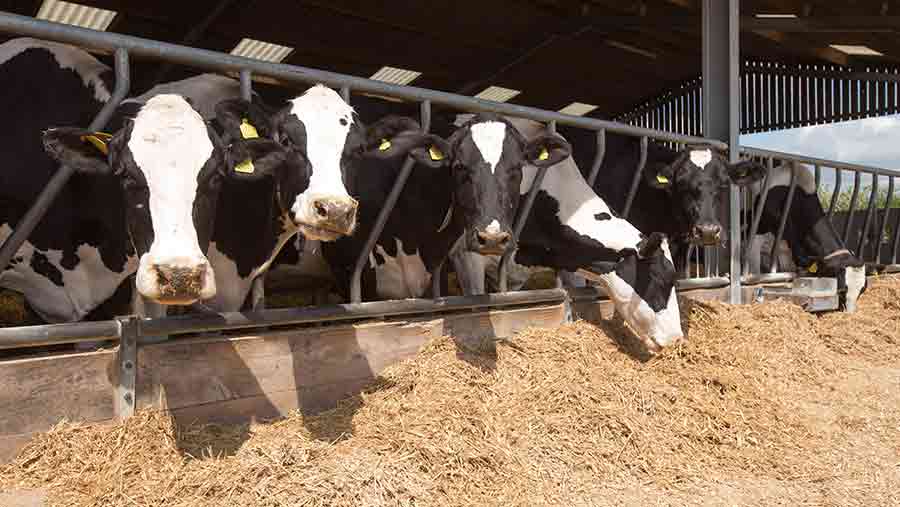Livestock Event 2016: Focus on water and space to cut transition headaches
 © Tim Scrivener
© Tim Scrivener Many of the headaches associated with transition cow disease could be eliminated by improving water access and addressing stocking rates in the dry period.
Vet Ian Illingworth of Dalehead Vets said the aim on any dairy farm was to limit negative energy balance (NEB) and natural immunosuppression at calving. However, to do so, maximising feed and water intakes and limiting stress was a must.
“You want no reason to suppress intakes and you can’t get good dry matter intakes without adequate water. It’s like the Jacob’s cracker challenge,” he said at a seminar in the Animal Health Zone at the Livestock Event 2016.
See also: Care of transition cows brings herd health ‘excellence’
Top tips
Water
- Aim for 10cm of water trough space for each cow
- Have troughs in more than one location
- Don’t locate troughs on straw or where bully cows can push more submissive cows away
- Ensure troughs are cleaned regularly – opt for bungs or tipping models
- Use shallow, long troughs where water pressure is good enough
Space
- Target 1sq m/1,000 litres of yield
- Check if you can rearrange sheds to free up space for transition cows
- Some farmers use polytunnels as a temporary measure when stocking rates are high
- Manage high stocking rates by pushing up feed more regularly
Access to water
Water access was one of the main pinch points identified by Dalehead Vets as part of a number of on-farm appraisals of transition cow management using Elanco’s Vital 90 Days Healthy Start Checklist. As part of the checklist, all parts of the transition period – defined as the 60 days before and 30 days after calving – were reviewed and ranked using a traffic-light system.
On many occasions, Mr Illingworth said water trough location, size and cleanliness were highlighted as high-risk factors. High stocking rates of 110% or over were also not uncommon, which affected lying and feed space.
He added: “As soon as stocking rate is flagged up, you can almost predict the next pinch point such as wet bedding, less feed space and environmental contamination. NEB is also more likely and stress is higher so immune suppression is more likely.”
Prioritise transition cows
He explained that by trying to give all groups of cows as much room as possible, it often meant space was sub-optimal for everything. Instead, it was worth making a “positive decision” to prioritise the cows that needed it the most.
“Prioritise transition cows and fresh cows until they are pregnant and that will limit the problems seen due to overcrowding.”
